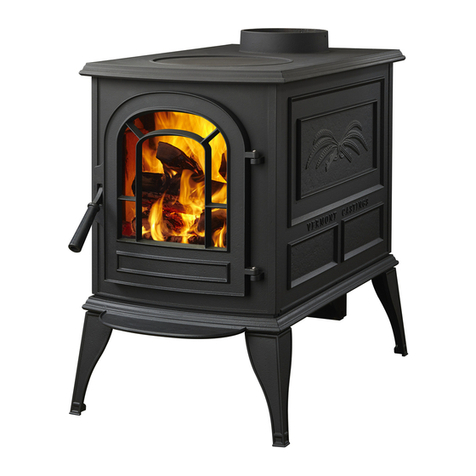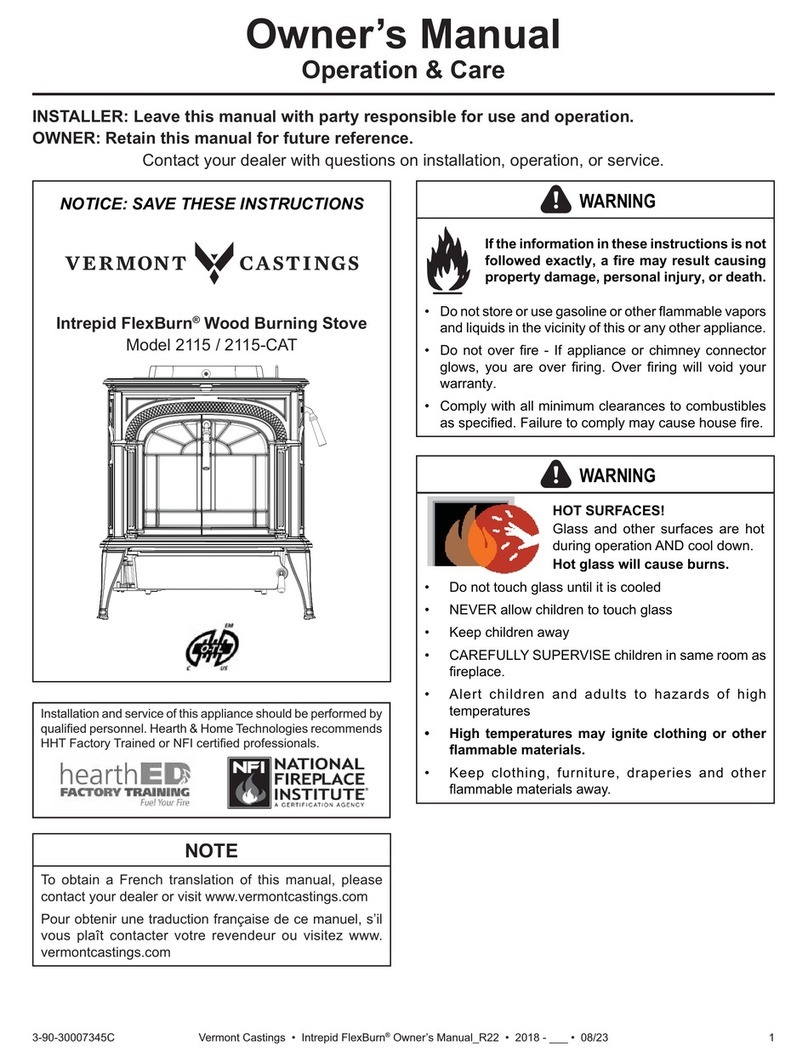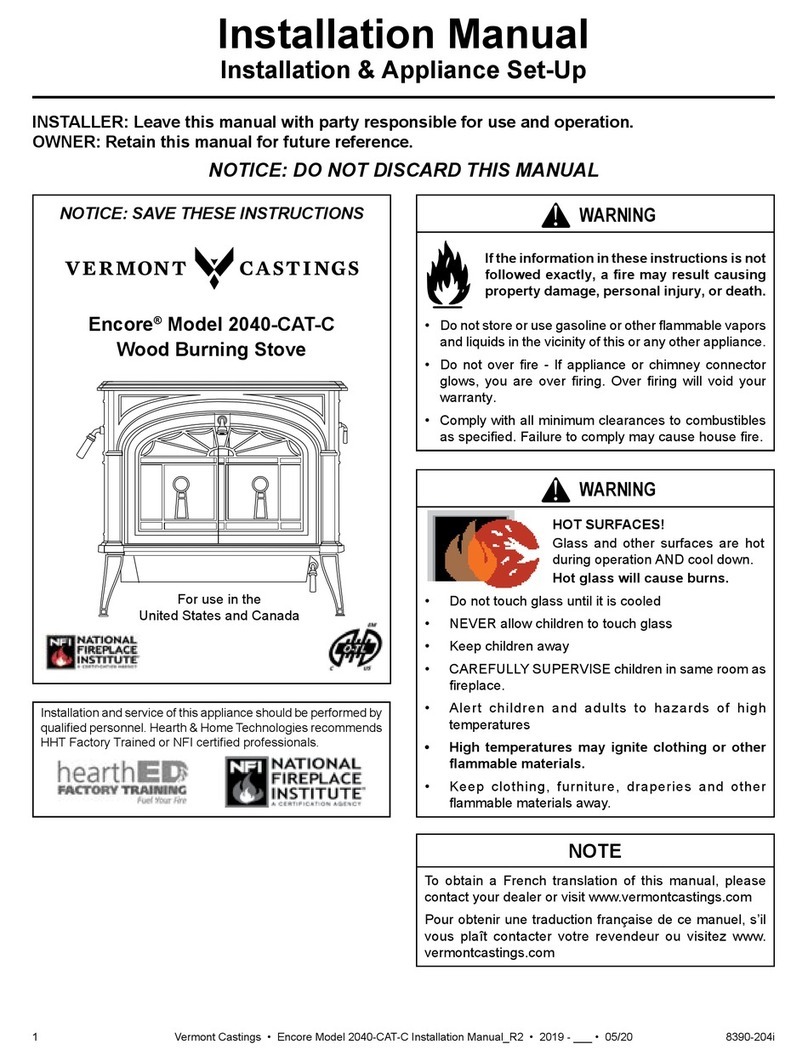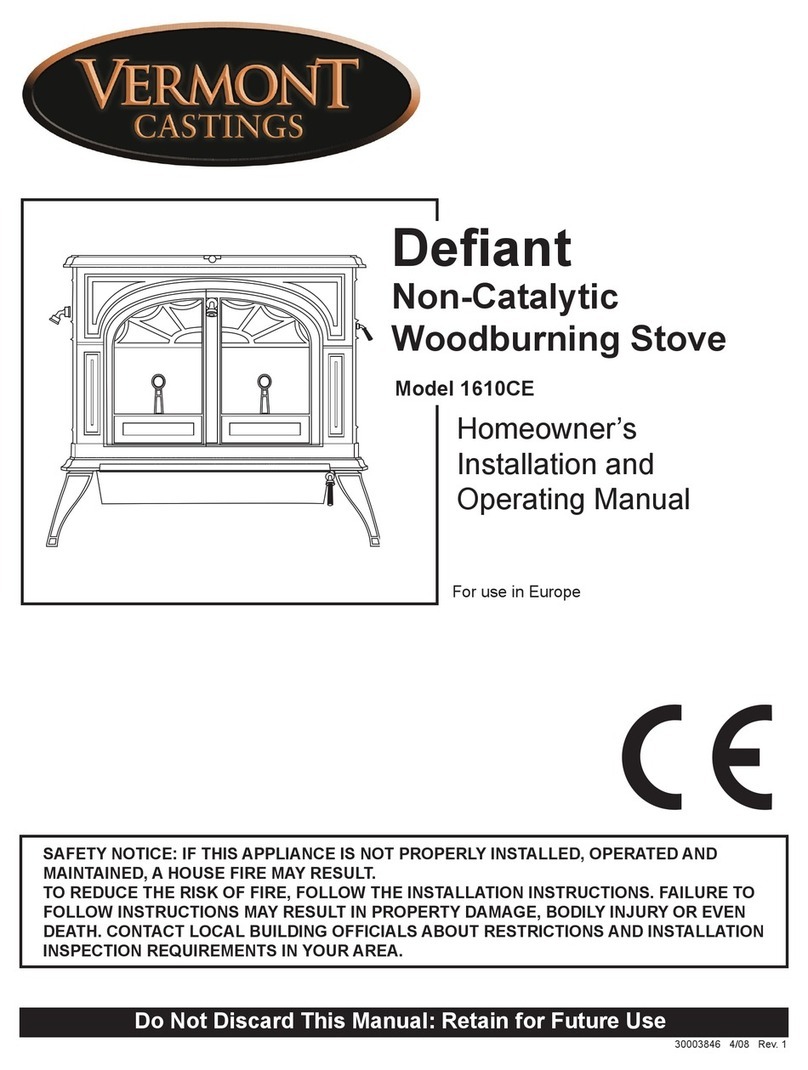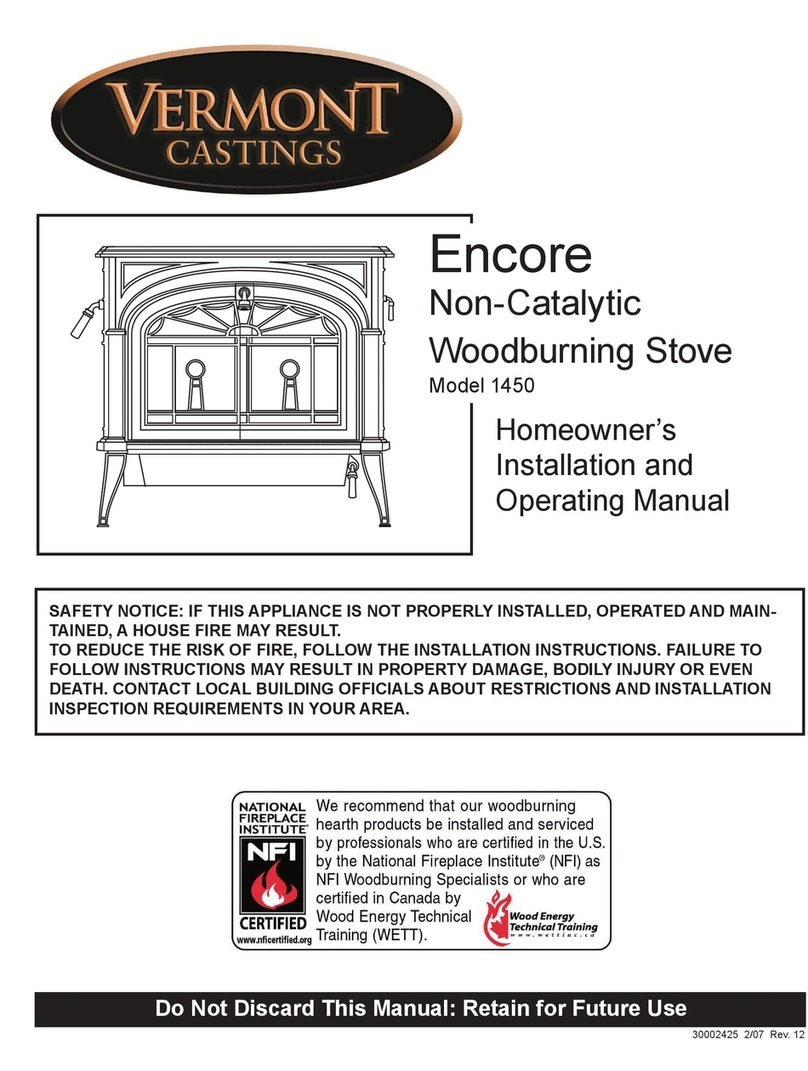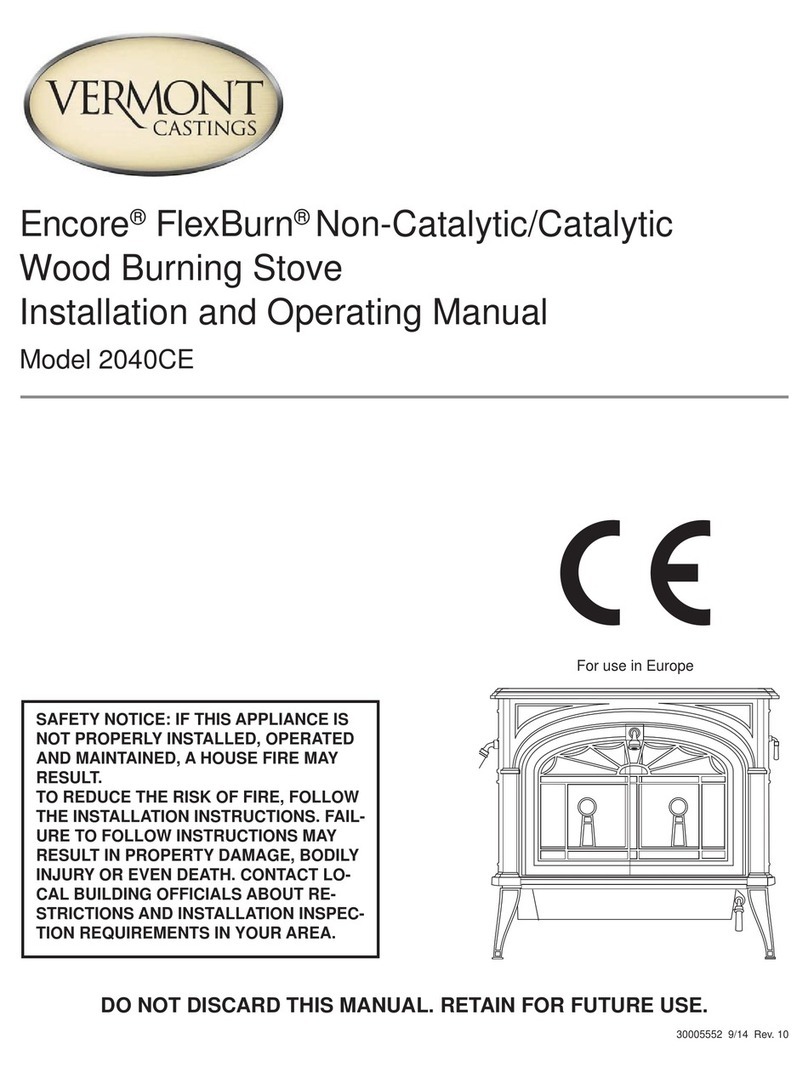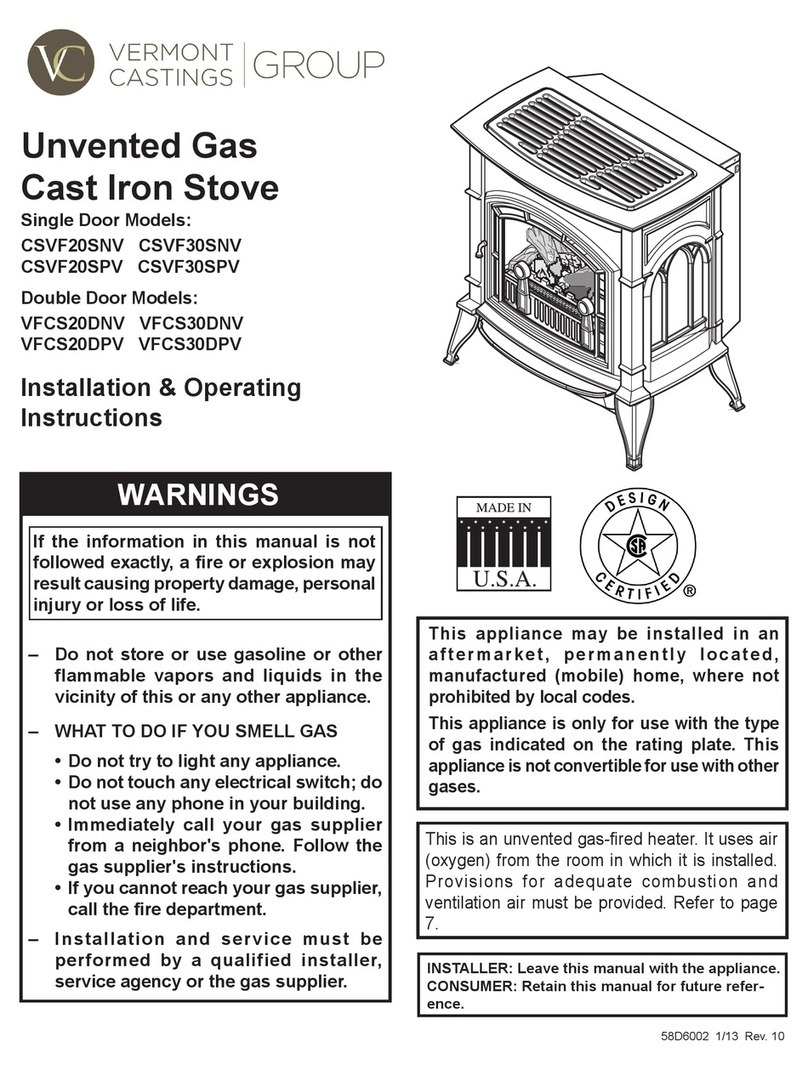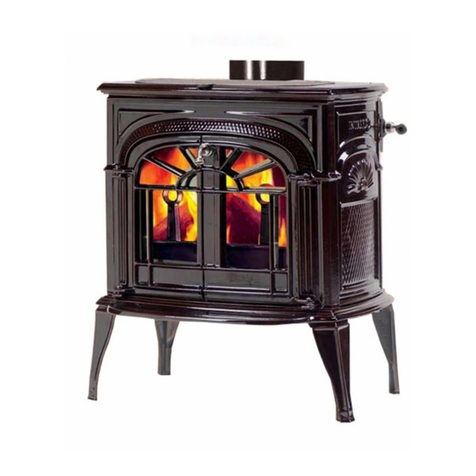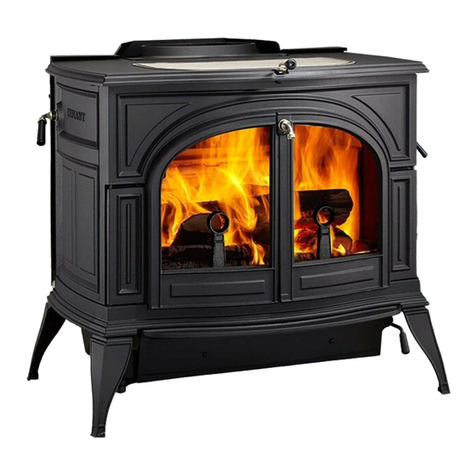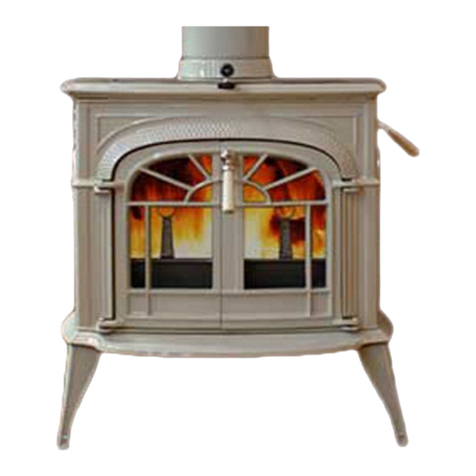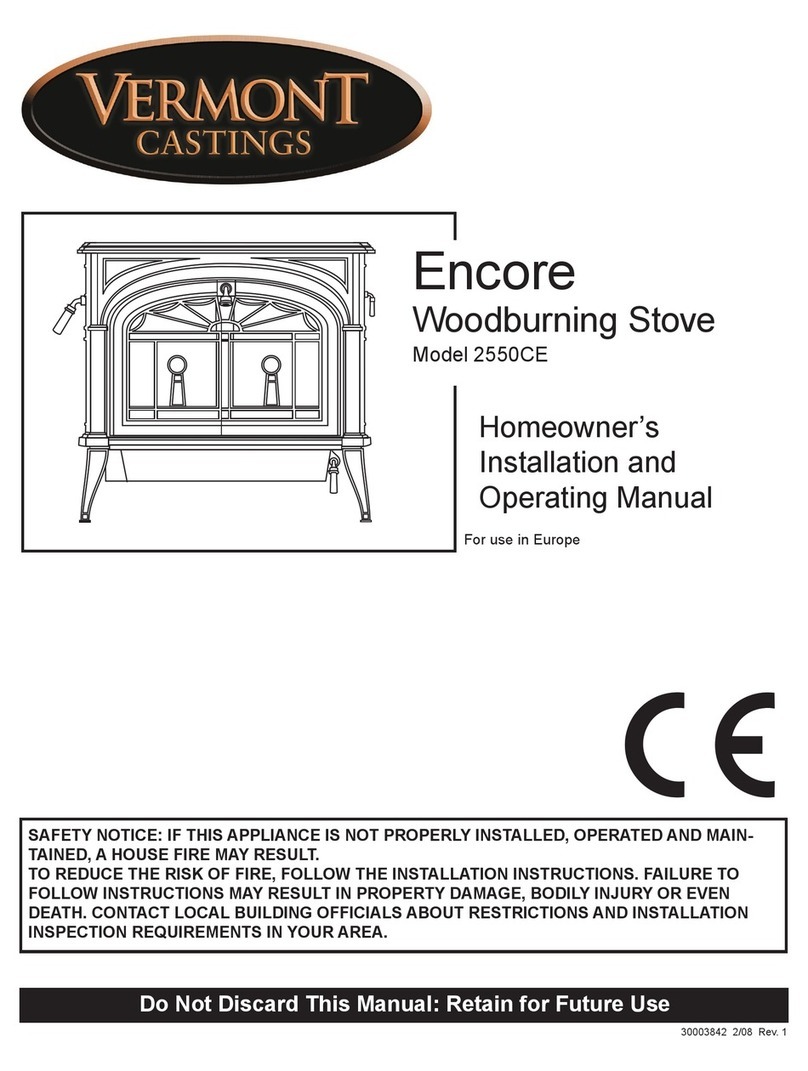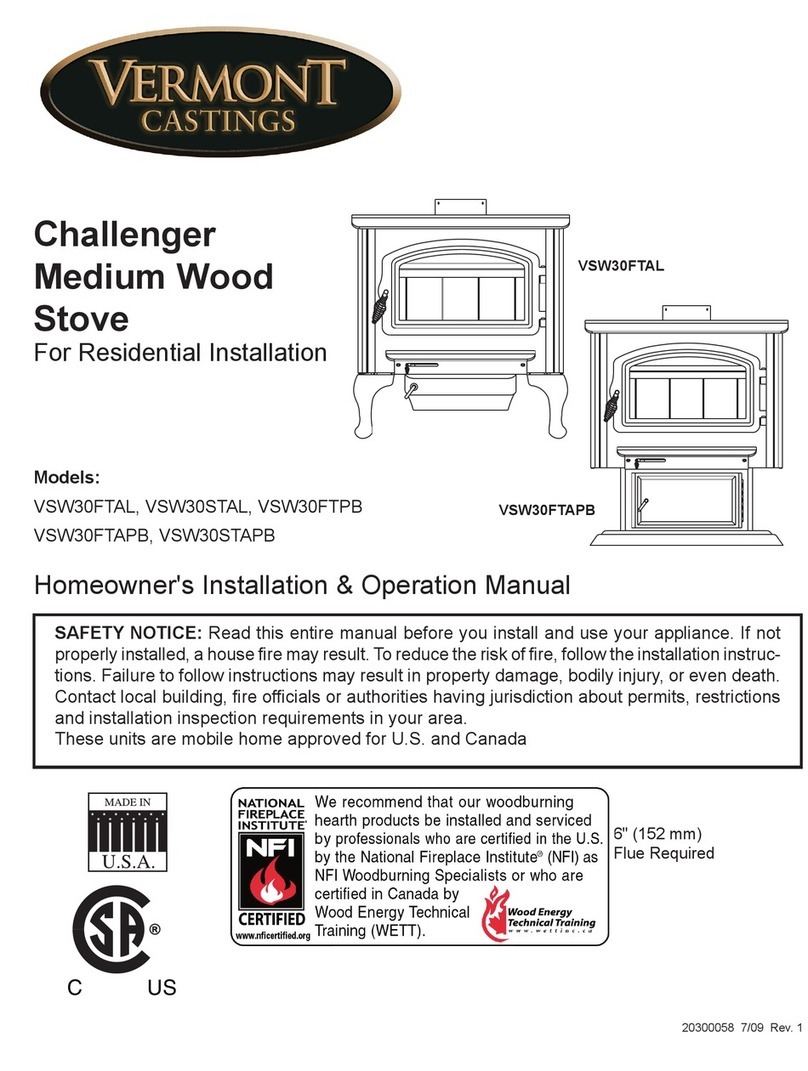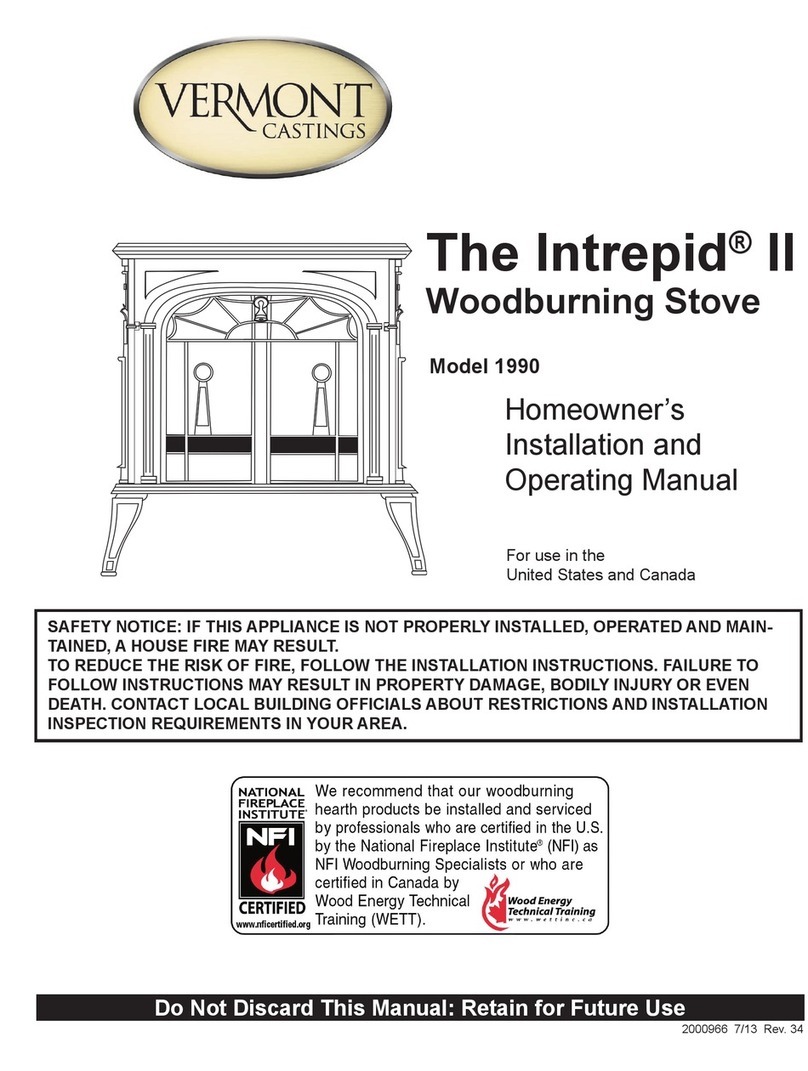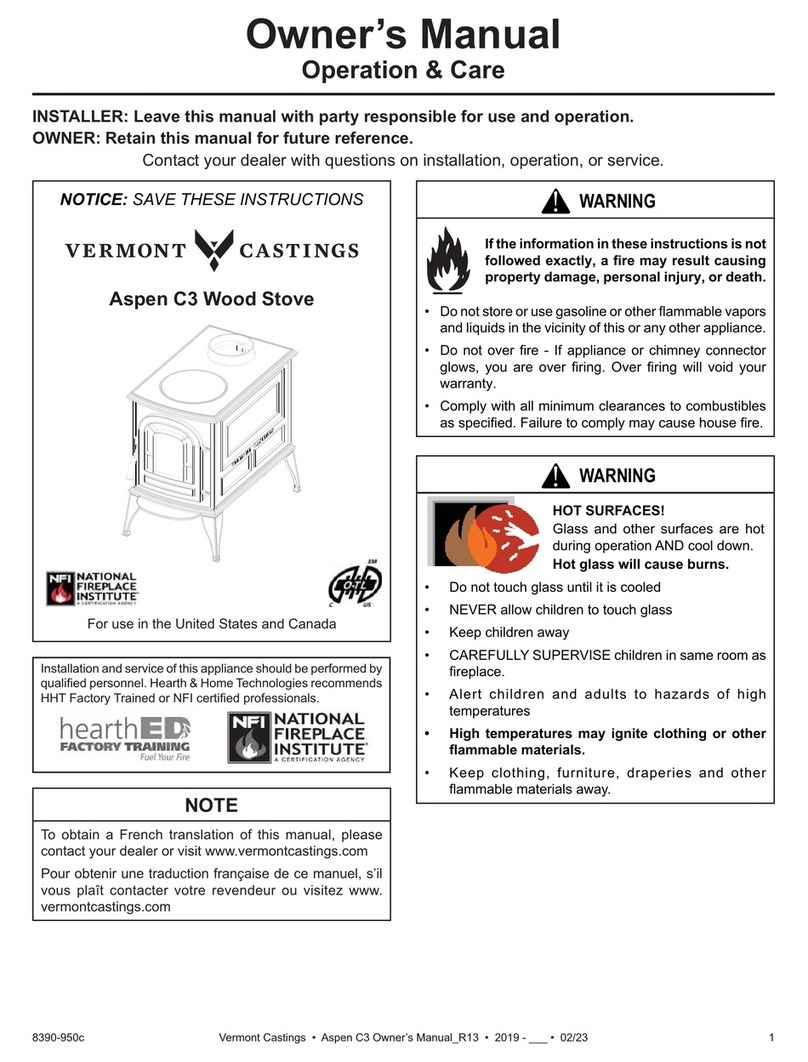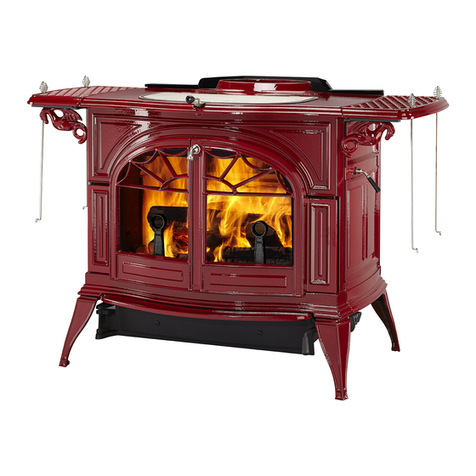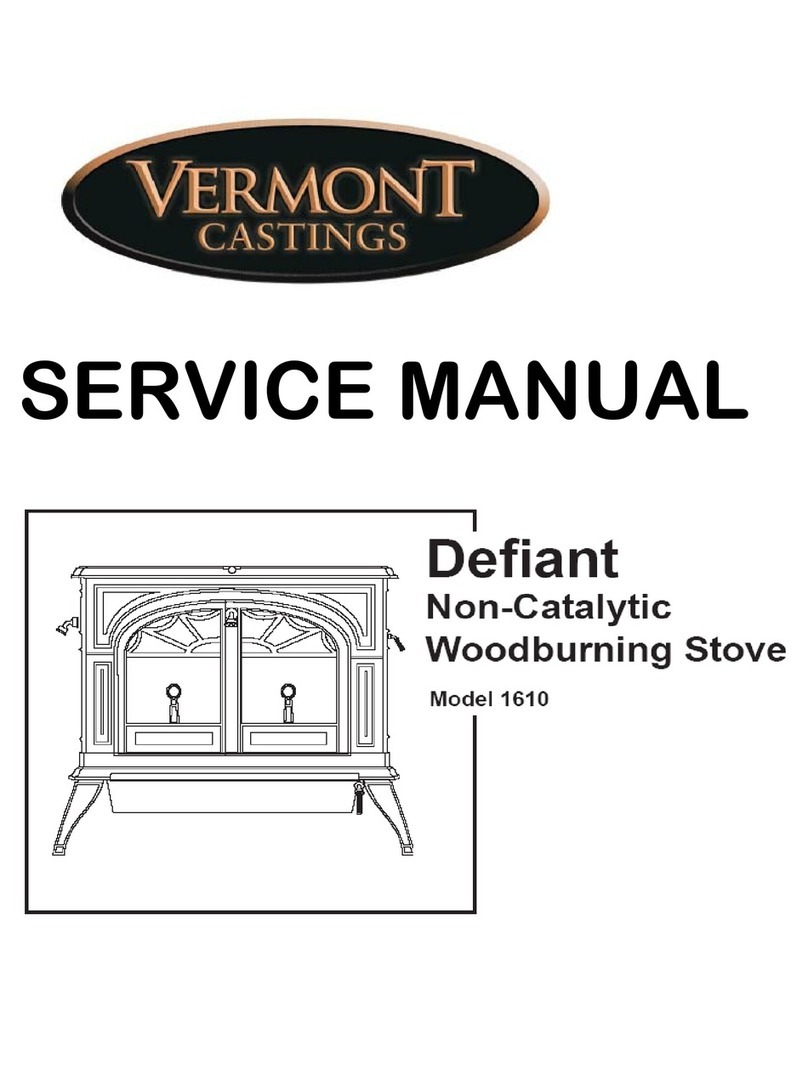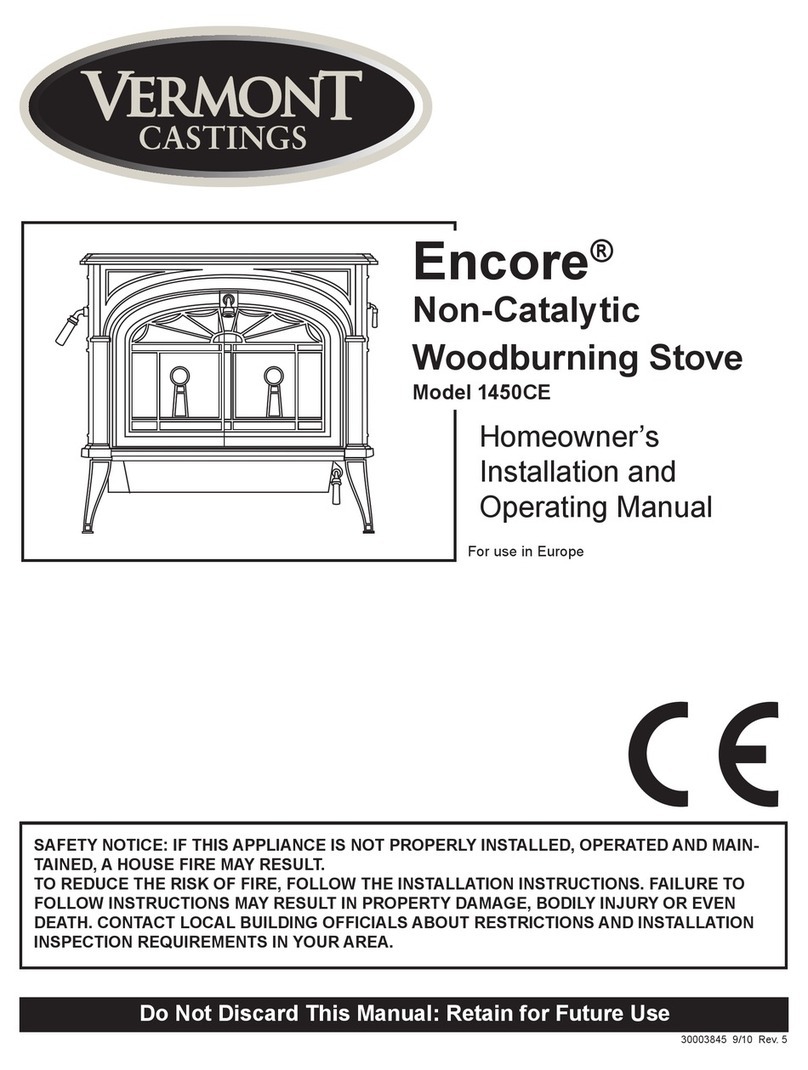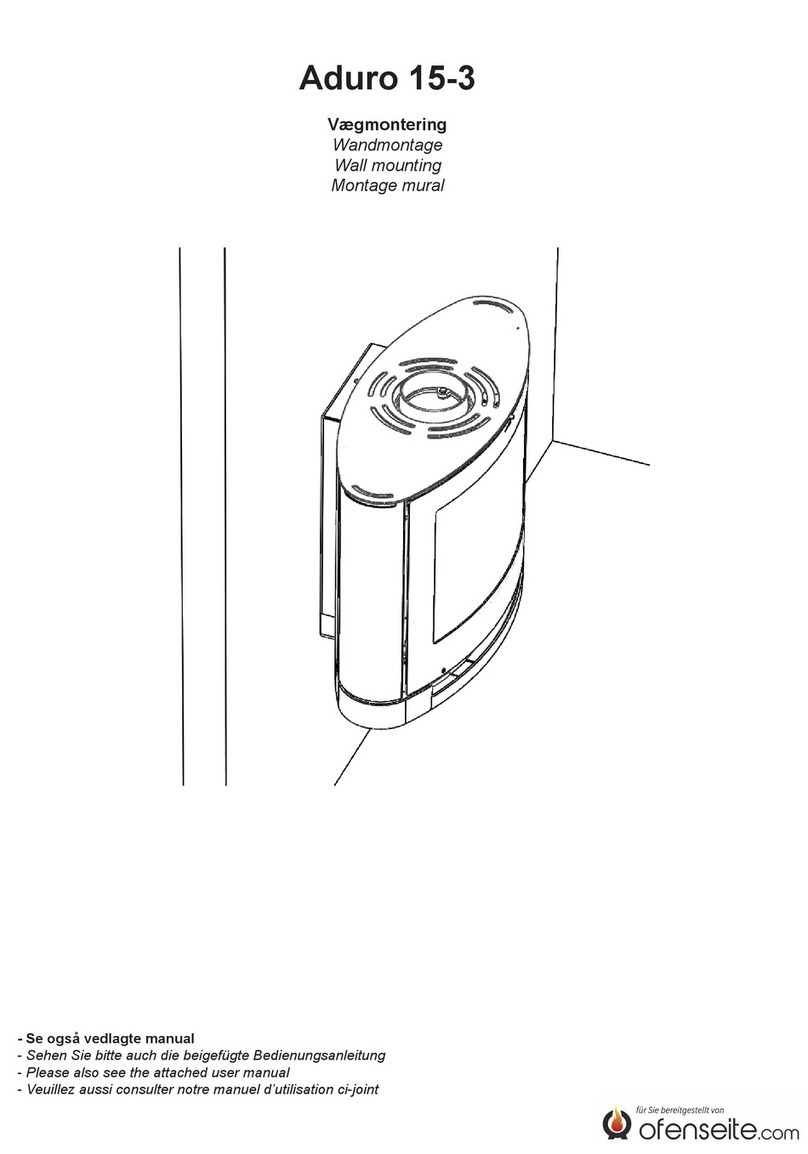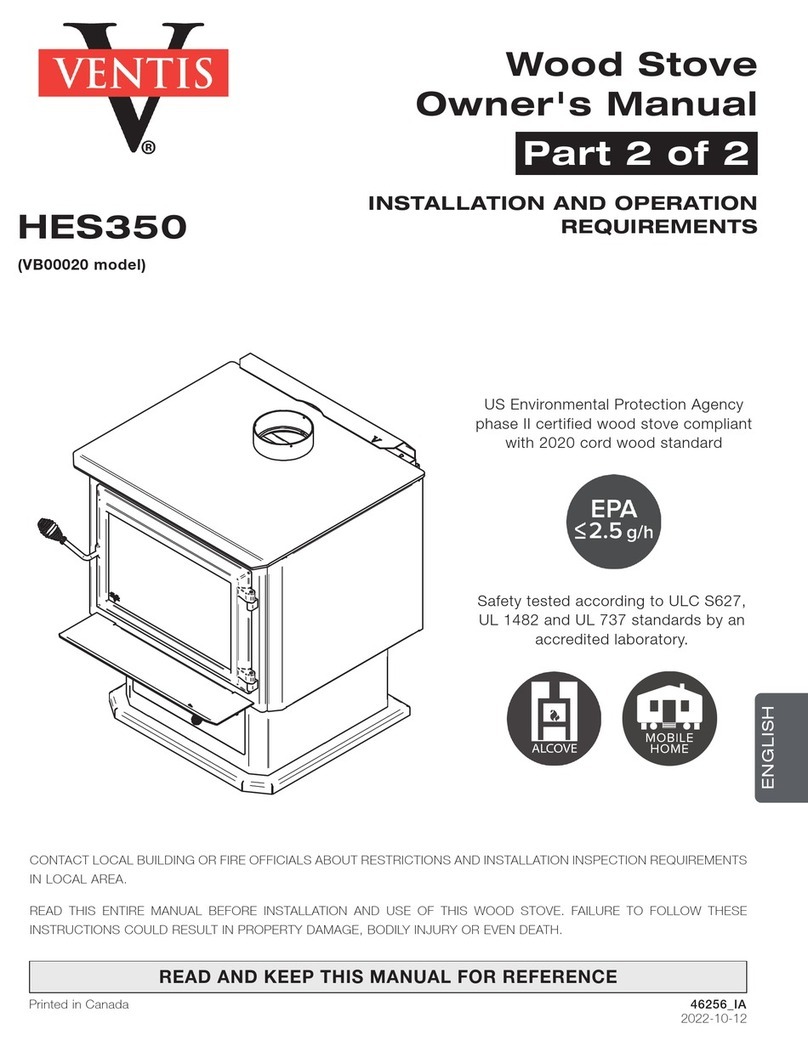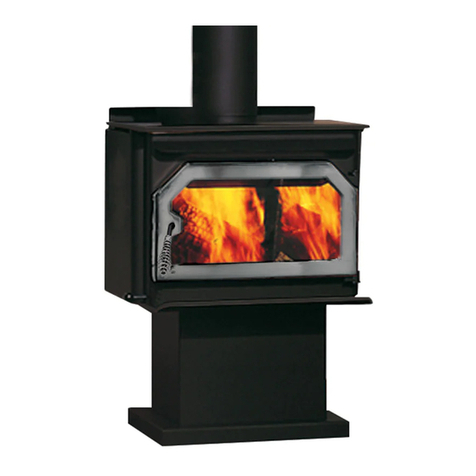
9
63D0001
SSW30 Series Wood Stove
9 Pivot the stove or twist the pallet so the rear corner
of the remaining support bracket is extended over the
pallet just far enough to install the rear leg.
10. Remove both of the bolts from the top rear section of
the hold down bracket and one of the bolts from the
top front section of the hold down bracket.
11. Pivot the hold down bracket out of the way just far
enough to install the other rear leg.
12. Pivot the stove or slide the pallet so that the three
installed legs are on the floor and the stove is
completely off the pallet.
13. Remove the nal remaining bolt from the hold down
bracket and install the nal leg.
1. Check that all brick and tubes are in place.
2. Select the proper location for the stove. These
appliances must not be installed any closer than the
minimum clearance to combustible materials shown on
Page 9 of this manual. The stove must be installed on
a non-combustible surface as shown on Page 9 of this
manual.
3. Remove packing material and packing labels from
glass.
4. If noncombustible materials have been installed on the
walls, obtain the minimum clearances from either the
manufacturer of these materials or the local building
inspectors ofce.
5. Install the stovepipe INSIDE the ue collar on the top
of the stove between the stove and chimney.
6. use a grate to elevate the re.
1. Make sure your chimney and chimney connector meets
safety codes. Check with authorities having jurisdiction
in your area.
2. All pipe sections must be connected with the male end
(crimped end) toward the stove.
3. Fasten the stove pipe to the ue collar by the use of three
sheet metal screws. Do the same at each additional joint
to make the entire installation rigid.
4. Maintain the required diameter flue for the entire
installation.
5. If you are connecting the stove to an old masonry ue,
be sure to have it inspected for cracks and general
condition. Resizing with a stainless steel liner may be
required.
6. It is recommended that no more than two 90 degree
bends be used in the stovepipe installation. More than
two 90 degree bends may decrease the amount of draw
and possible cause smoke spillage.
7. A damper is not required in this installation. Remove
any damper plate in the chimney or secure in the
position.
8. Single wall ue pipe assemblies must not exceed 10
feet (3 meters) in overall length.
Maintaining a clean chimney is important. Chimneys should
be inspected regularly for creosote buildup. A straight
chimney is easier to clean than one with 45 or 90 degree
bends. A bend requires the pipe to be removed for cleaning.
The stove bafe must be removed when cleaning the
chimney. Chimney sweepings will build up on top of bafe
causing a blocked ue and/or a re hazard.
Most factory made “Class A” steel chimneys have a layer
of insulation around the inner ue. This insulation keeps
the smoke warm and protects the surrounding structure
from the high ue temperatures. Because the insulation is
less dense than masonry, the inner steel liner warms up
more quickly than masonry chimney; this makes the steel
chimney support a good draft more quickly than masonry
does.
Because the chimney’s function is to keep the smoke
warm, it is best to locate it inside the house. This location
uses the house as insulation for the ue and allows some
radiant heat release form the ue into the home. Since an
interior chimney doesn’t continuously lose its heat to the
outdoors, less heat from the stove is required to get it warm
and keep it warm.
The ue size for a controlled-combustion appliance should
be based on the cross-sectional volume of the stove ue
outlet. In this case, more is denitely not better. Hot gases
lose heat through expansion; if a stove with a six-inch ue
collar (28 square inch area) is vented into a 10" x 10" ue,
the gases will expand to over three times their original
volume. As gases cool with expansion, draft strength
decreases. If the oversized ue is also outside the house,
the heat it absorbs will be conducted to the outdoor air and
the ue will remain relatively cool.
It is common for a masonry ue to be oversized for the
stove. Such a chimney can take quite a while to warm up,
and the stove performance will likely be disappointing. The
best solution to an oversize ue problem is the installation
of an insulated steel chimney liner of the same diameter
as the appliance ue outlet. The liner keeps the exhaust
gas warm and the result is a stronger draft. An uninsulated
liner is a second choice—although the liner will keep the

